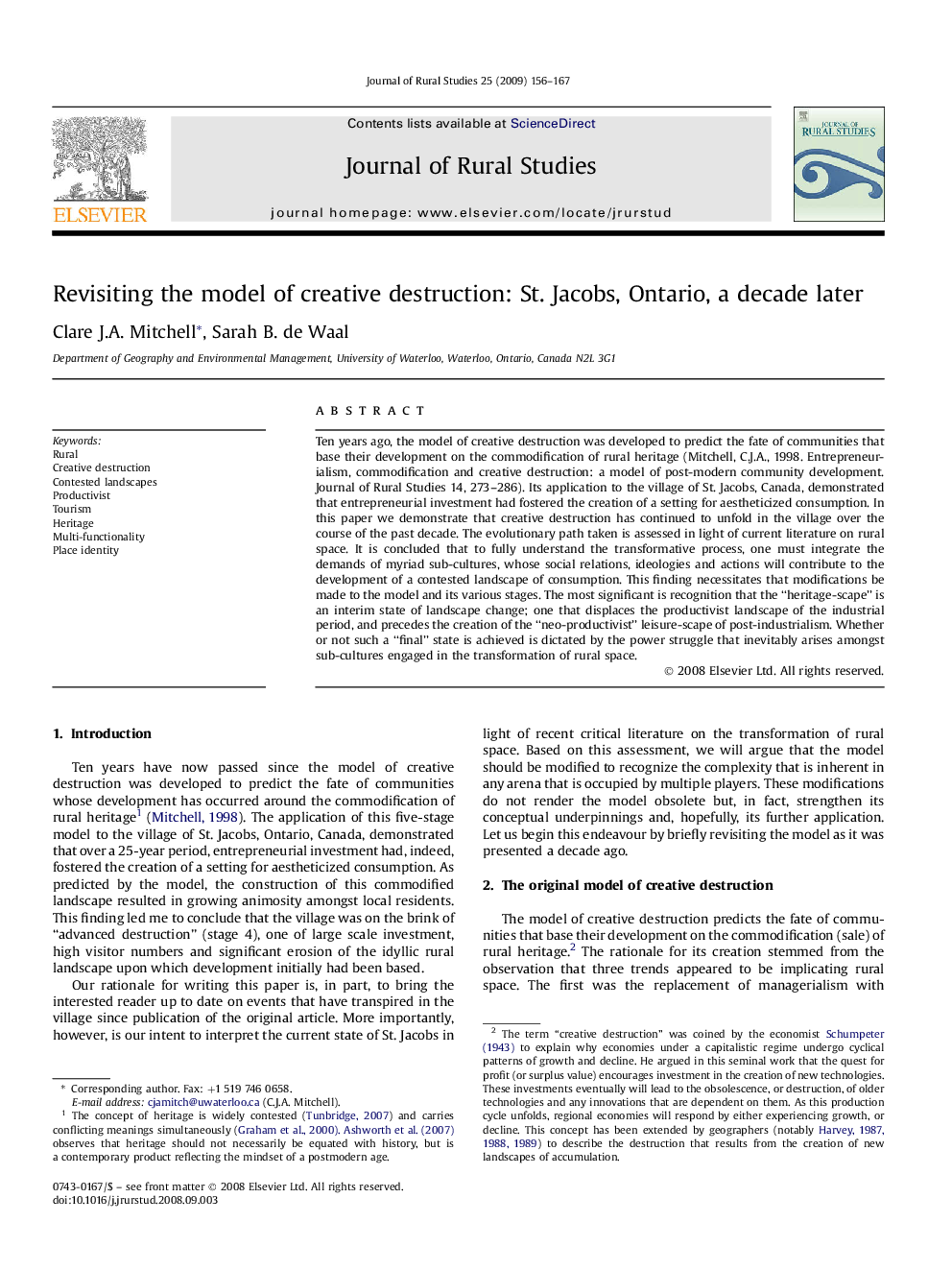| Article ID | Journal | Published Year | Pages | File Type |
|---|---|---|---|---|
| 92748 | Journal of Rural Studies | 2009 | 12 Pages |
Ten years ago, the model of creative destruction was developed to predict the fate of communities that base their development on the commodification of rural heritage (Mitchell, C.J.A., 1998. Entrepreneurialism, commodification and creative destruction: a model of post-modern community development. Journal of Rural Studies 14, 273–286). Its application to the village of St. Jacobs, Canada, demonstrated that entrepreneurial investment had fostered the creation of a setting for aestheticized consumption. In this paper we demonstrate that creative destruction has continued to unfold in the village over the course of the past decade. The evolutionary path taken is assessed in light of current literature on rural space. It is concluded that to fully understand the transformative process, one must integrate the demands of myriad sub-cultures, whose social relations, ideologies and actions will contribute to the development of a contested landscape of consumption. This finding necessitates that modifications be made to the model and its various stages. The most significant is recognition that the “heritage-scape” is an interim state of landscape change; one that displaces the productivist landscape of the industrial period, and precedes the creation of the “neo-productivist” leisure-scape of post-industrialism. Whether or not such a “final” state is achieved is dictated by the power struggle that inevitably arises amongst sub-cultures engaged in the transformation of rural space.
